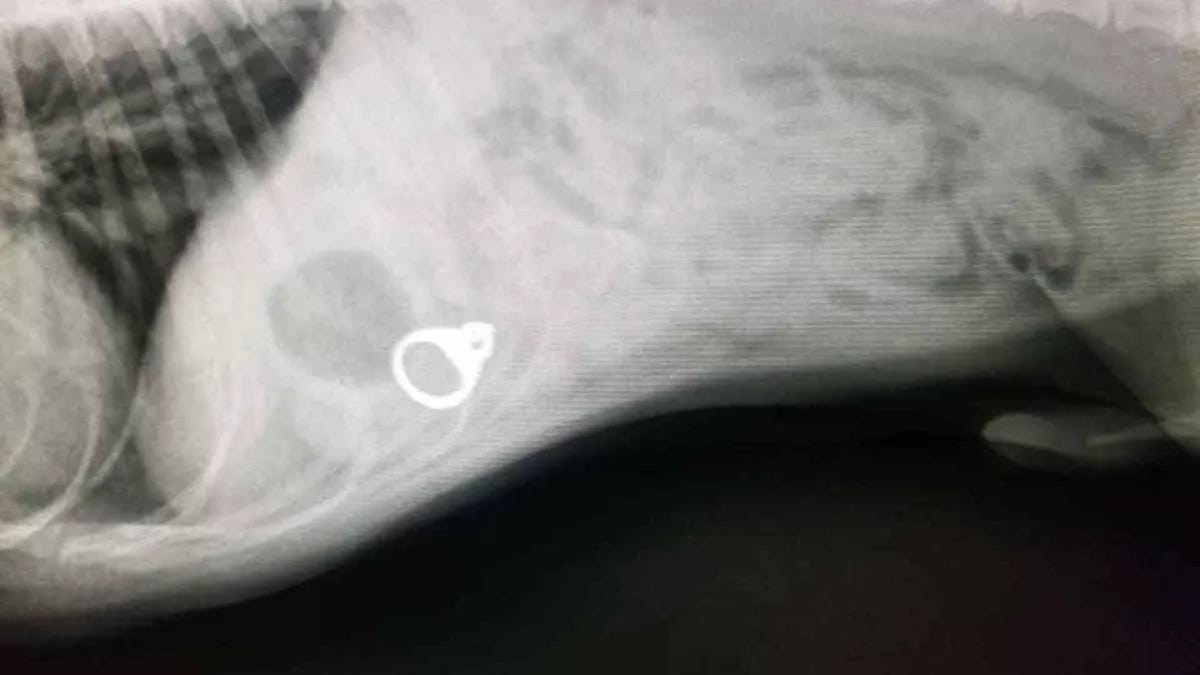Did you hear about the poor water buffalo in India that had to undergo jewelry-extraction surgery?
It happened in Washim, a district in the state of Maharashtra, where a farmer named Ramhari Bhoir grows soybeans (also known as soya beans). On a recent day, the farmer’s wife, Geeta, did some dehulling, removing soybeans from their hulls (or husks). She placed the hulls in a bowl, so she could feed them to her buffalo the next morning. She took a bath afterward, but before doing so, she placed her 25-gram gold mangalsutra (bridal necklace) in the same bowl. The next day, she couldn’t find her necklace and remembered where she had placed it. But it wasn’t there any longer.
The buffalo had expected to get its usual meal, thinking as it approached the bowl, “Soybean hulls again? They keep giving me soybean hulls. Why not something different for a change? Don’t they care about me?”
Then the animal spotted the gold necklace and almost jumped out of its hide in excitement. “They do care about me! They’ve given me minerals! The vet said I needed more minerals.”
The necklace soon disappeared into the complex digestive system of the ruminant, with more compartments than the Chennai Express
Realizing what had happened, Geeta Bhoir took her buffalo to a veterinarian, concerned not just about her necklace but also the animal’s health. After a sonogram confirmed the presence of the necklace in the buffalo’s stomach, a two-hour surgery was performed by the local gastrojewelogist.
Dr. Balasaheb Kondane, a health official from Washim, told the news agency ANI that the buffalo needed more than 60 stitches. That’s twice as many stitches as the average human would get after running into a buffalo.
“We request people to be careful while feeding fodder to animals and ensure that nothing else is present in it,” Kondane said.
Before you judge Geeta Bhoir, try to remember all the times you accidentally left jewelry in your pet’s feeding bowl.
Okay, perhaps you never did that, but surely you’ve placed a ring within reach of your dog, seen it disappear and then rushed your dog to the veterinarian, who told you to be patient and the ring would eventually make its way to an exit.
Trust me, this happens so often that the Daily Mirror, a tabloid in Britain, has an article template with the headline already written: “My dog ate my engagement ring and now the wedding is off.”
In March 2022, the Mirror wrote about an Illinois woman named Shyler Brianne Kraus, who was in an online meeting at home when her dog, Finn, grabbed her wedding ring from her bedside table. She took Finn to the vet’s office, where an X-ray showed the ring in Finn’s tummy. The vet gave Finn a “bunch of high-fiber food” and asked Kraus to look for the ring in his … uh … “offerings.”
It took almost four days for the ring to finally make its way out. Kraus found it in the “offerings” just 15 minutes before Finn was scheduled to undergo jewelry-extraction surgery.
The X-ray of Finn.
Unfortunately Kraus was unable to warn all the women who leave their rings on their bedside tables. About a month later, Elayna Rattenbury of Worcester, England, left her diamond and sapphire engagement ring on her bedside table and soon spotted it on an X-ray of her dog Stevie’s tummy. Her vet advised her to “let nature take its course,” a polite way of saying, “You won’t just be picking up after your dog, you’ll also be picking through.”
It took four days for the ring to show up, much to Rattenbury’s relief. She cleaned it with hot soapy water and a toothbrush before putting it back on her finger.
Four days may seem like a long time, but not to a Wisconsin woman named Lois Matykowski. In 2014, her 10-year-old dog, Tucker, threw up, and as she was about to clean up the vomit, she spotted something sparkly.
It was a wedding ring that had gone missing six years earlier.
Tucker’s veterinarian believes that a Popsicle stick (or ice pop) that he had swallowed a couple of days earlier might have dislodged the ring.
I know what you're thinking: perhaps it would be wise to give all animals, including buffaloes in Maharashtra, an occasional Popsicle stick.





I’m anxious to learn more about the rapidly-growing medical field of gastrojewelogy studies.
These real-life stories were a welcome change from the other horrific real-life to death stories coming out of Isreal and Gaza. Thank you.